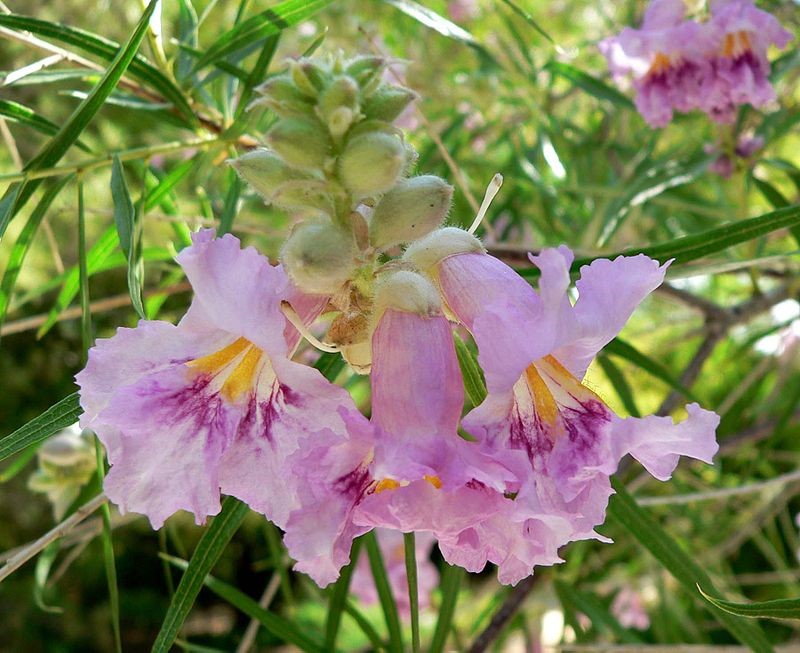Desert Willow - The Delicate and Durable Desert Star
Desert Willow – The Delicate and Durable Summer Star
By Tanya Quist, Director University of Arizona Campus Arboretum
When summer heat hits the cities of the southwestern US, native plant blooms explode, filling the landscape with incredible horizons filled with yellow palo verde and creosote, peachy profusions of prickly pear flowers, fat, waxy white blooms of saguaro, and pops of red and orange from ocotillo and cholla. For these few weeks, summer debuts and the desert becomes an audacious exhibition of color strongly contrasted by the backdrop of bright yellow-green new growth of velvet mesquite foliage and ever periwinkle blue skies. However, as May concludes and the extreme heat of June ramps up, the particular graceful floral contributions of the Desert Willow take the stage, replacing the kaleidoscope of colorful desert natives with a different kind of beauty that is at once delicate in appearance but in fact, fierce, durable and tough.
Durable and Tough
The Desert Willow, known by its scientific name Chilopsis linearis, is a native of the Desert Southwest growing at elevations up to 5000 feet. The species name refers to the narrow, linear 6 inch leaves of the small tree that grows up to 25 feet on average. The leaves and the delicate branch structure mimic the appearance of a willow tree, justifying the common name. The name, of course, is wonderfully ironic, given the riparian habitat of most true willow trees. The desert willow, in contrast, thrives with much less than 20 inches of water a year, once established and, unlike true willow species, grows well on the poor quality, chalky, low-organic matter soils typical in the desert. This drought tolerant tree is also adapted to salty soils that are common where low-quality irrigation water is used. In fact, salty soil and less irrigation water produces stronger branches and limits the risk of storm damage to limbs. Though the tree is deciduous, it hunkers down and survives winter temperatures down to 0°C, ready to sprout and reliably perform in the Spring.
Endless Summer Blooms
Despite the impressive environmental adaptation of this plant, the flowers take center stage in May, covering the canopy with dense profusion of pastel flowers, that repeat the performance throughout summer and fall. The genus name, Chilopsis, references the Greek words “resembling” “lips”, pointing to the appearance of the 1-2 inch wide floral corolla which fans out like collagen-enhanced celebrity lips broadcasting pastel colors of pink, purple and white that taper into a funnel at the base where yellow and orange streaks catch the light like a sunset and, effortlessly attract pollinators. Flowers grow in a group called a panicle at the tip of the branches, allowing for a concentration of color on the outer edge of the canopy. A wide array of cultivars are available in nurseries throughout the southwest offering a range of bloom colors from burgundy, fuschia and pure white along with a range of leaf colors and forms to suit any preference.

For more information on this amazing plant, including the location on the University of Arizona Campus, see the full species description page here.
- Log in to post comments




